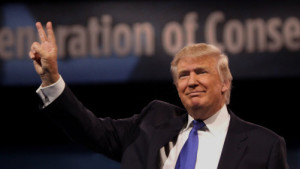
This article about Donald Trump’s “long, close and wide-ranging dealings with organized crime figures,” appeared in Politico May 22, 2016. It’s by David Cay Johnston, who has covered Trump for 27 years. Johnston won a Pulitzer Prize for his New York Times reporting on the American tax system and currently teaches business, property and tax law of the ancient world at Syracuse University’s law and graduate business schools. I’m shocked it didn’t get more exposure.
Just What Were Donald Trump’s Ties to the Mob? – By David Cay Jonnston, Politico.com
In his signature book, The Art of the Deal, Donald Trump boasted that when he wanted to build a casino in Atlantic City, he persuaded the state attorney general to limit the investigation of his background to six months. Most potential owners were scrutinized for more than a year. Trump argued that he was “clean as a whistle”—young enough that he hadn’t had time to get into any sort of trouble. He got the sped-up background check, and eventually got the casino license.
But Trump was not clean as a whistle. Beginning three years earlier, he’d hired mobbed-up firms to erect Trump Tower and his Trump Plaza apartment building in Manhattan, including buying ostensibly overpriced concrete from a company controlled by mafia chieftains Anthony “Fat Tony” Salerno and Paul Castellano. That story eventually came out in a federal investigation, which also concluded that in a construction industry saturated with mob influence, the Trump Plaza apartment building most likely benefited from connections to racketeering. Trump also failed to disclose that he was under investigation by a grand jury directed by the U.S. attorney in Brooklyn, who wanted to learn how Trump obtained an option to buy the Penn Central railroad yards on the West Side of Manhattan.
Why did Trump get his casino license anyway? Why didn’t investigators look any harder? And how deep did his connections to criminals really go?
These questions ate at me as I wrote about Atlantic City for The Philadelphia Inquirer, and then went more deeply into the issues in a book, Temples of Chance: How America Inc. Bought Out Murder Inc. to Win Control of the Casino Business. In all, I’ve covered Donald Trump off and on for 27 years, and in that time I’ve encountered multiple threads linking Trump to organized crime. Some of Trump’s unsavory connections have been followed by investigators and substantiated in court; some haven’t. And some of those links have continued until recent years, though when confronted with evidence of such associations, Trump has often claimed a faulty memory. In an April 27 phone call to respond to my questions for this story, Trump told me he did not recall many of the events recounted in this article and they “were a long time ago.” He also said that I had “sometimes been fair, sometimes not” in writing about him, adding “if I don’t like what you write, I’ll sue you.”
I’m not the only one who has picked up signals over the years. Wayne Barrett, author of a 1992 investigative biography of Trump’s real-estate dealings, has tied Trump to mob and mob-connected men.
No other candidate for the White House this year has anything close to Trump’s record of repeated social and business dealings with mobsters, swindlers, and other crooks. Professor Douglas Brinkley, a presidential historian, said the closest historical example would be President Warren G. Harding and Teapot Dome, a bribery and bid-rigging scandal in which the interior secretary went to prison. But even that has a key difference: Harding’s associates were corrupt but otherwise legitimate businessmen, not mobsters and drug dealers.
This is part of the Donald Trump story that few know. As Barrett wrote in his book, Trump didn’t just do business with mobbed-up concrete companies: he also probably met personally with Salerno at the townhouse of notorious New York fixer Roy Cohn, in a meeting recounted by a Cohn staffer who told Barrett she was present. This came at a time when other developers in New York were pleading with the FBI to free them of mob control of the concrete business.
From the public record and published accounts like that one, it’s possible to assemble a clear picture of what we do know. The picture shows that Trump’s career has benefited from a decades-long and largely successful effort to limit and deflect law enforcement investigations into his dealings with top mobsters, organized crime associates, labor fixers, corrupt union leaders, con artists and even a one-time drug trafficker whom Trump retained as the head of his personal helicopter service.
Now that he’s running for president, I pulled together what’s known – piecing together the long history of federal filings, court records, biographical anecdotes, and research from my and Barrett’s files. What emerges is a pattern of business dealings with mob figures—not only local figures, but even the son of a reputed Russian mob boss whom Trump had at his side at a gala Trump hotel opening, but has since claimed under oath he barely knows.
Please go to Politico.com to read the SHOCKING details!









